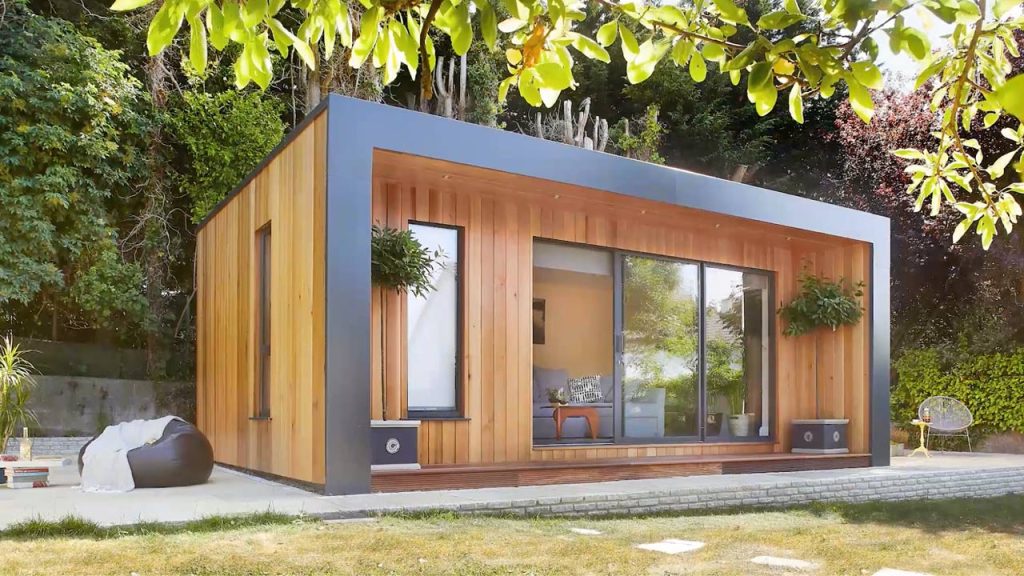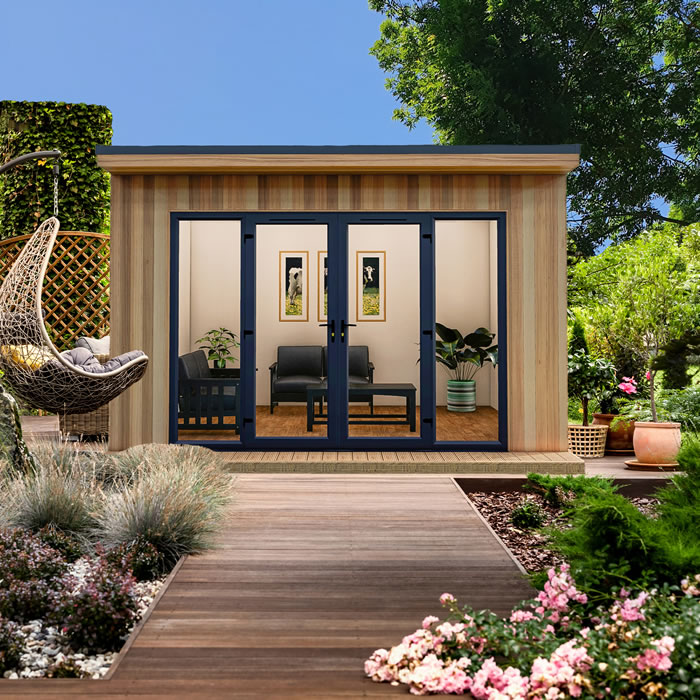Excellent Facts For Planning Permission For Garden Summer Houses
Excellent Facts For Planning Permission For Garden Summer Houses
Blog Article
What Planning Permits Are Needed For Garden Rooms, Etc. In Terms Of Changes Of Use?
In determining if planning permission is needed for conservatories, garden rooms outhouses, garden offices and outhouses, or extension, "change of use" is also known as "change of purpose", plays an important function. These are the most important aspects to be considered when it comes to planning permission related to changes in use: Change from Non-Residential to Residential Use
You will need planning permission in order to convert a nonresidential structure, such as an agricultural or garage, into the home office or living space. It is required due to the fact that the building's use classification will alter.
The Garden Rooms are Living Accommodation:
It's considered to be to be a "change of usage" when you convert the garden into a separate accommodation for guests, like a guest house. Planning permission is required to make sure that the construction meets the standards of residential and the regulations.
Business Use:
The planning permission is required if the garden room/extension will be used for business purposes. The effect of the project on the surrounding areas like noise, traffic and parking, could need planning permission.
Educational or Community Use
A planning permit is required to permit the conversion of a garden structure to an educational or community space (such a classroom, meeting room or auditorium). The local authority will evaluate the suitability of location and its impact on the surroundings.
Local Impact on Infrastructure:
Any change of use which has a major impact on the local infrastructure (e.g. roads, drainage systems and public services.) is likely to need planning permission. These impacts will be analyzed by the local authority for planning in the course of the process for submitting an application.
Dual Use
If a property is going to have an unmixed use (such as part-residential, part-commercial) Planning permission is typically required to clearly define and govern the different functions within the property.
A Boost in Footfall and Traffic
If the change is likely cause an increased foot or traffic, such as converting a garden into a small shop space, planning permission will be required to handle any possible impact on the surrounding area.
Building Regulations In compliance:
While not a matter of planning permission, any change in usage must conform to the building regulations to ensure security, health, and energy efficiency standards. This is relevant in particular when it comes to conversions of non-habitable areas to habitable areas.
Environmental Impact:
Planning permission is required for any change in use that may affect the natural environment. This includes converting farms into residential properties. As part of your application, you might require an environmental assessment.
The impact of community amenities and Communities:
Impact on community amenities and characteristics of the area are the most important factors to take into consideration. As an example for converting a space within the garden to a café shop, you need approval from the planning department. This is so that it is in line with community plans while also preserving local amenities.
Designated Zones
In designated areas, such like National Parks, conservation areas or Areas of Outstanding Natural Beauty(AONB) the usage of land is subject to more strict restrictions to maintain the look and feel of the place. Planning permission is crucial in these instances.
Local Planning Policies:
Local planning authorities have policies that are different on the subject of changes to usage. You should consult these policies to know what types of changes are permitted and what requirements need to be fulfilled.
For a summary the planning approval process is typically required for any major changes of the use of conservatories in the garden or outhouses, gardens offices or extension. The new use should be appropriate for the space, in line with the local and federal policies on planning as well as consider the potential social and environmental impact. To establish the precise requirements and receive the necessary approvals, it is vital to consult your local planning authorities prior to beginning planning. Take a look at the most popular bespoke timber buildings hertfordshire for website recommendations including garden rooms hertfordshire, ground screws vs concrete base, garden room planning permission, garden outhouse, garden outhouse, small garden office, garden room planning permission, how to lay decking on soil, out house, garden rooms in St Albans and more.
What Height Restrictions Are You Required To Follow When Designing The Layout Of Your Garden?
The height of gardens and conservatories as well outhouses, office buildings, or extensions will determine whether or not a permit for planning is required. Here are some important height criteria that you should be aware of.
The height of an outbuilding that is detached or extended should not exceed 4 meters with an eaves-pitched roof (such as Gable roofs).
The other types of roof (flat or single-pitched) cannot exceed three meters in height. For all other types (flat, single pitched, etc. ) the ceiling height cannot exceed three meters.
Distance from boundaries:
The maximum height of a structure that is less than 2 meters away from the boundary should not be more than 2.5 meters. This is applicable to sheds, garden rooms and other similar outbuildings.
The Eaves' Height
The length of the eaves (the distance from the roof's lowest point to the highest eaves elevation) of any structure must not exceed 2.5 meters.
Conservatories & Extensions
For a single-story rear extension the height cannot exceed 4 meters. This is inclusive of the roof, and any wall with a parapet.
Side Extensions
Extensions on the sides should not be higher than 4 meters and not wider than 50% of the original size of the home.
Special Roofs
Structures with a roof that is flat can only be built to a max 3 m in height.
Additional Restrictions in Designated Areas:
In designated conservation zones, Areas of Outstanding Natural Beauty and other designated areas, there might be height restrictions that are stricter and planning permission is required for structures that are otherwise allowed.
Buildings of National Parks
Like designated areas structures in National Parks may have additional height limitations that require approval for planning.
Roof Design
The height of the highest part of the roof (excluding chimneys or antennas.) It is important to consider. Planning permission is required if the high point is greater than the allowed development limit.
Neighbours affected
Planning approval is required, even if the building does not exceed the limit of height. This could be required in the event of significant effects on sunlight, privacy or views of adjacent properties.
Maximum Height All-Over:
The maximum height of a building cannot exceed four meters. For example, a garden office with a roof that is double pitched must not be taller than 4 meters at its highest point.
Decking or platforms:
Any platforms or decks that are connected to the structure should not raise the surface of the ground more than 0.3 meters in order to avoid the need for permission for planning.
It's always best to inquire with the local authority responsible for planning to determine specific regulations and any recent changes to the regulations. Even if your development falls within the rights to development permitted by general law, local variations and conditions could require permission for planning. Read the recommended round garden office pods for more info including costco outbuildings, garden room, do you need planning permission for a garden room, garden room planning permission, garden room conservatory, garden rooms brookmans park, garden room conservatory, do you need planning permission for a garden room, outhouse, garden room and more.
What Permits Do You Need For Garden Rooms And Other Structures In Terms Utilities And Infrastructure When It Comes To Planning?
Infrastructure and utilities are crucial when planning to construct conservatories or garden spaces in addition to outhouses, garden offices and extension. They can also influence whether planning permission is needed. Here are some key considerations regarding water supply and drainage
If the new structure needs to be connected to water supply or drainage systems, planning approval may be required. Local water authorities might be required to consider the effects of the construction on water supply or sewage systems.
Gas and Electricity Connections
If you are planning to connect a building to an electric or gas supply, you might need an authorization for the project. The connections must meet the safety standards and building codes.
Utility Easements
Planning permission may need to be obtained when the proposed structure is located within utility easements. It might be required for the local utility company to authorize the construction of these areas.
Septic Tanks and Sewage Systems
If a new building requires a septic treatment system, or perhaps a smaller tank for septic, then planning permission is needed. These systems must meet environmental and health regulations.
The drainage of Surface Water Management
You may need to get approval for drainage plans and runoff from surface waters. It could be necessary to adopt measures to stop flooding as well as water pollution.
Access to Utilities for Construction
Permission is required in the event that construction requires temporary access to services, like water (for reasons of construction). The temporary connections are subject to safety and environmental regulations.
Impact on local infrastructure:
The local authority must assess whether the infrastructure in place can be used to support the development. This includes roads, utilities and public services. The local authority will determine whether the existing infrastructure is able to help support the new development.
Waste Management and recycling:
Permissions for planning may contain requirements regarding waste management and recycling both during and after construction. To limit the environmental impact of construction, it's important to have adequate provisions for recycling and waste management.
Efficiency and Renewable Energy. Efficiency as well as Renewable Energy
Installing energy-efficient features as well as renewable energy systems in a new building (such as heat pumps or solar panels) may require planning permission. The compliance with building codes as well as environmental standards are essential.
Telecommunications and Internet Connectivity
Planning permission may be required in the event that the building is required to have telecommunications and internet connections. Compliance with regulations and standards for the telecommunications infrastructure is vital.
Access to the Footpath and Road:
In some cases, it might be necessary to obtain planning permission before you can construct or alter a footpath. Footpaths and roads must conform to the highest safety standards.
Accessibility to Public Transport:
Planning permission might be required if a new structure interferes with the public transport infrastructure (such a bus stops or stations). Conformity with the regulations and standards for public transport infrastructure is essential.
Summary: Utility and infrastructure aspects play an important part in determining whether planning permission is needed for garden rooms or conservatories. Check with the local planning authority as early as you can in the planning phase to ensure compliance with relevant guidelines and standards. Read the best garden outhouse gym for site info including costco outbuildings, composite summer house, garden office, garden out house, myouthouse, my outhouse, garden room planning permission, best electric heater for cabin, garden rooms near me, garden rooms brookmans park and more.